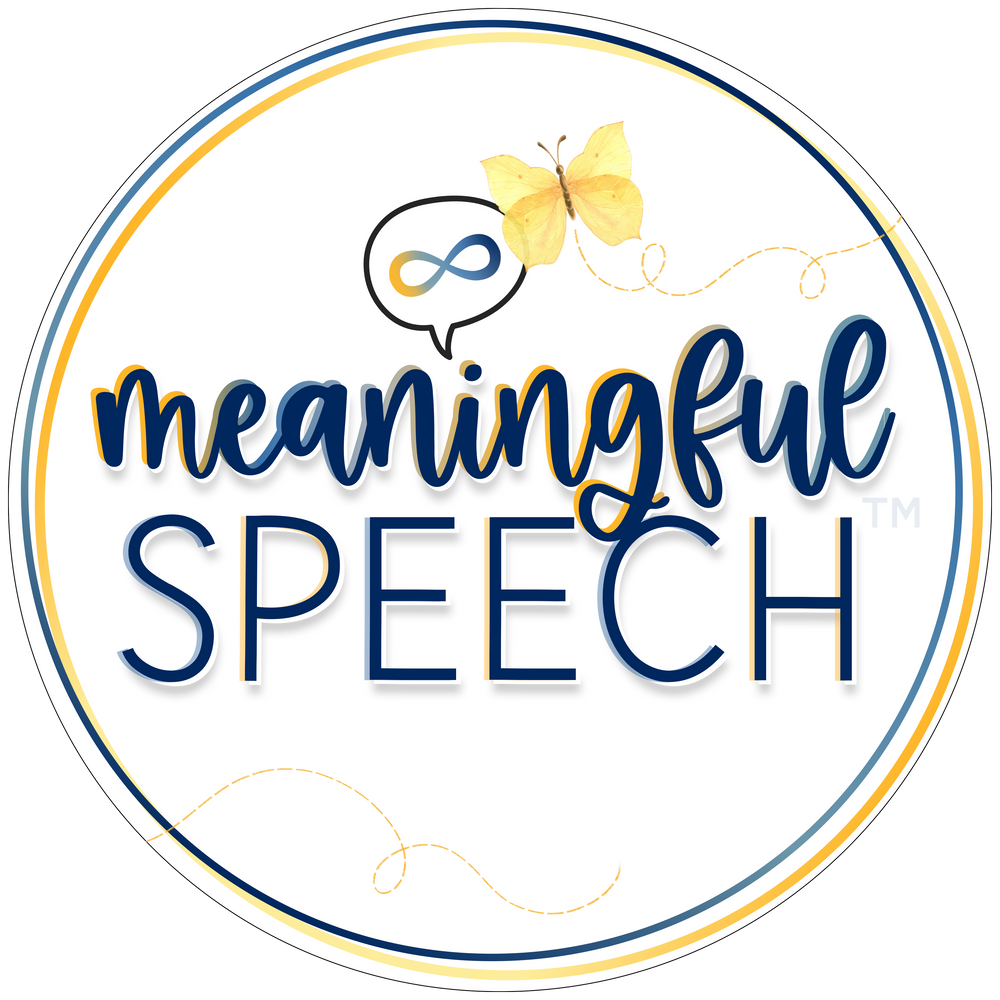How to Choose Potential Gestalts to Model for Gestalt Language Processors in Stage 1
Nov 20, 2024
When supporting gestalt language processors in Stage 1, our goal for gestalt language processors in Stage 1 is for them to increase the amount and variety of mitigable (easy to mix and match and/or trim down in stage 2) gestalts that they are using spontaneously through naturalistic language modeling. To achieve this, the language we model needs to be meaningful and individualized to the child and be supportive of the stage of gestalt language development that the child is mainly in. Here’s what to consider when selecting language to model:
1. Is the Gestalt Easily Mitigable?
Mitigable gestalts are those that can be broken down into smaller chunks or combined with other partial gestalts in Stage 2. These phrases lay the groundwork for more flexible communication in later stages.
Examples of Mitigable Potential Gestalts:
- Let’s get a snack.
- How ‘bout we go home.
- That’s so silly!
- Need some help.
- We’re jumping.
- Wanna jump on the trampoline.
These could later transform into:
- Need some + snack
- Let’s + jump
- We’re + home
Avoid gestalts that are harder to break down or mix, such as:
- “Peas and carrots, carrots and peas.”
- “Pop goes the weasel!”
- Single words like “Fish.”
- Fixed phrases like “To infinity and beyond!”
2. Is It Individualized and Meaningful to the Child?
There’s no one-size-fits-all list of potential gestalts we should offer a gestalt language processor. The language you model should reflect what’s relevant and meaningful to the child.
Ask yourself:
- What does the child want to express?
- What are they communicating through their current gestalts?
- What are their interests and daily experiences?
For example, a child who has a special interest in trains might connect with phrases like, “Wanna play trains?!” or “Let’s go on the tracks!”
3. Does It Reflect the Child’s Perspective or a Joint Perspective?
We want to model language that is either from the child's perspective (how they would say it themselves) or from a joint perspective (you and the child). We want to avoid using language that uses the pronouns "you" and "you're". This is because the child will repeat the language you model verbatim. For example:
- From the child’s perspective: “I’m hungry!”
- From a joint perspective: “Let’s get a snack.”
Avoid using “you” or “you’re,” as these phrases might be repeated verbatim and may make it seem like the child has pronoun reversal when they don't. This often results in them having inappropriate grammar goals to correct pronoun reversals from clinicians who do not understand gestalt language development and natural language acquisition.
4. Are You Expanding a Single-Word Gestalt? (You Shouldn’t Be!)
If a child has a single-word gestalt, such as “dog” (used as a catch-all for all animals), resist the urge to expand on it. Acknowledge it, but model something completely novel instead.
For example:
- Child says: “Dog!”
- Avoid: “It’s a dog!”
- Model instead: “It’s so big!”
5. Are You Covering a Variety of Communicative Intents?
Communication serves many purposes, so it’s essential to model potential gestalts that span a range of intents. Aim for at least one gestalt per category before moving onto supporting Stage 2. These categories include:
- Expressing wants/needs: “Let’s eat snack.”
- Joint action routines: “Wanna jump!”
- Surprises: “That’s a surprise!”
- Transitions: “What’s next?”
- Protesting: “Don’t like it.”
- Sensory-motor experiences: “That’s too loud.”
- Shared joy: “Jumping is the best!”
- Help: “Need some help.”
- Commenting: “That’s silly!”
- Self-advocacy: “Stop now.”
6. Have You Considered the Length of the Gestalts?
Keep the length of modeled potential gestalts age-appropriate and manageable, especially for children with motor planning challenges. For younger children or those with difficulties, stick to shorter phrases (2-3 words).
For example:
- Child is 2 years old: Model “Let’s jump!” instead of “Let’s go jump on the trampoline.”
By thoughtfully choosing language to offer, we can support gestalt language processors in Stage 1 as they develop a strong foundation for natural language acquisition. Remember, the key is to focus on what’s meaningful, mitigable, and varied—always keeping the child’s perspective or a joint perspective at the center.
Want to learn more in-depth information about how to support gestalt language processors?
- There are many free podcasts, webinars and articles to get you started. A comprehensive list of resources can also be found on our website. We just released a new FREE masterclass on echolalia and child-led therapy that is perfect for anyone starting their learning journey or on the fence about purchasing our courses!
- Consider taking the Meaningful Speech course to learn more about how your child or client processes language, how you can help support them from echolalia to self-generated (original flexible) language, child-led therapy, and neurodiversity-affirming practices. Looking for something shorter? We have a 1-hour introductory course perfect for extended family, daycare or school staff.
- Consider taking our AAC + Gestalt Language Processing course. It will teach you how to identify, evaluate and support gestalt language processors who use AAC or who you think might benefit from AAC.
- Look for a speech-language pathologist (SLP) who "gets it" and can help you in supporting your child's language development. Check out our registry for SLPs who understand gestalt language processing and child-led therapy.
- Are you a school-based or private practice clinician looking for intake forms for new clients/students or creative visual reminder posters for your space? Check out the Meaningful Speech Marketplace.
- Want to learn more about starting a niche private practice? Watch our 1-hour webinar on starting a niche private practice hosted by Alex Zachos and Jess Teixeira from the Meaningful Speech team HERE.
